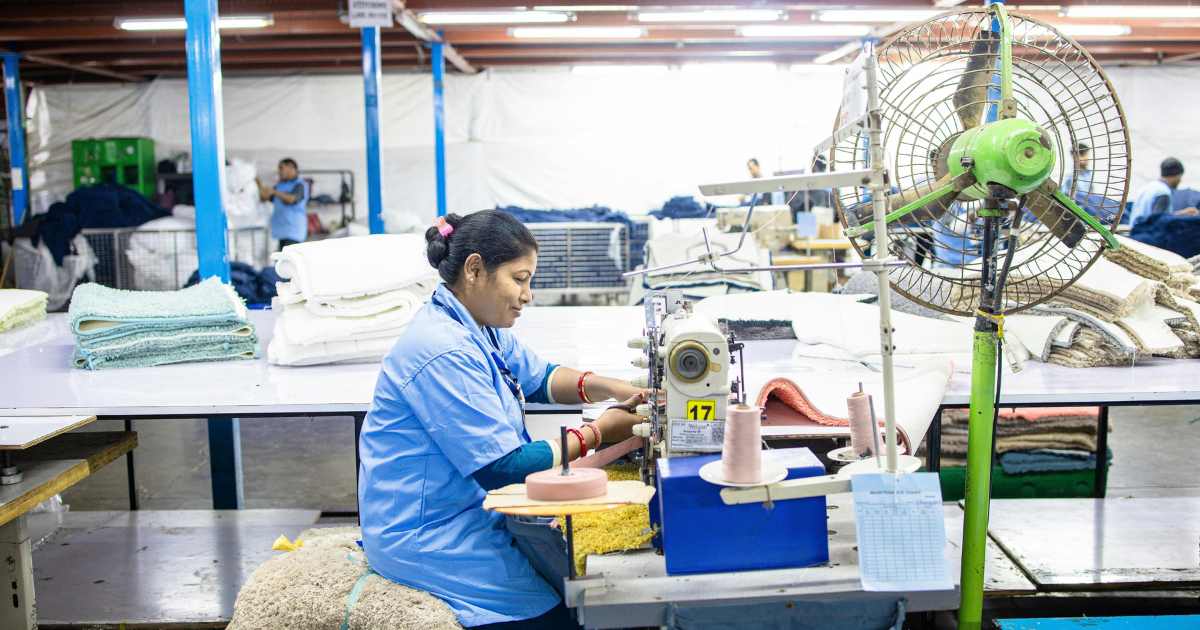South African apparel manufacturers operate within a vibrant yet demanding fashion landscape. Having to constantly navigate resource constraints while striving for a competitive edge is no easy feat.
The strategic adoption of technology has shifted from being a luxury to a fundamental requirement for small and medium-sized enterprises (SMEs) seeking operational efficiency, cost reduction, and the ability to adapt to shifting consumer preferences.
This article highlights five pivotal tech tools poised to revolutionise apparel manufacturing processes, offering SMEs pathways to streamlined workflows and enhanced market responsiveness.
1. CLO 3D: Elevating Design with Virtual Prototyping
Traditional sketching methods, while foundational, can be time-consuming and prone to errors. CLO 3D, a computer-aided design (CAD) software that allows you, as a designer, to implement technology in your business.
By creating and visualising garments in a 3D environment, this tool enables rapid prototyping, accurate fitting, and real-time adjustments, reducing the need for multiple physical samples.
Adopting CLO 3D means faster turnaround times and significant savings on material costs. By visualising designs digitally, manufacturers can make informed decisions, minimise waste, and present clients with realistic previews, enhancing customer satisfaction and reducing revisions.
2. FastReactPlan by Coats Digital: Streamlining Production Planning
Managing production schedules manually often leads to inefficiencies and missed deadlines. FastReactPlan offers a visual planning platform tailored for the fashion industry, enabling manufacturers to coordinate sampling, production, and delivery timelines effectively.
Implementing FastReactPlan allows businesses to optimise resource allocation, anticipate potential bottlenecks, and maintain consistent communication across departments. This proactive approach ensures timely deliveries, builds client trust, and positions businesses for scalable growth.
The platform also integrates with other enterprise systems, such as enterprise resource planning (ERP) and shop floor control (SFC), creating a seamless data flow that enhances decision-making and collaboration across different teams.
3. Epson SureColor F-Series: Customising Fabric Printing
This technology eliminates the dependency on external suppliers for printed fabrics, reducing lead times and granting full creative control. Moreover, the eco-friendly ink options align with the growing consumer demand for sustainable fashion practices. If you’ve struggled to find clothing manufacturers, the Epson SureColor F-Series empowers apparel SMEs to become design innovators by bringing high-quality, on-demand fabric printing in-house.
Beyond simply offering customisation, this technology enables rapid iteration on design concepts, allowing for swift responses to emerging trends without the delays associated with external printing services. South African manufacturers can explore niche markets demanding unique textile designs and offer personalised products, which can lead to customer satisfaction and stronger customer relationships.
Digital printing enables highly detailed and photo-like designs on fabric. Printing on demand also cuts down on waste, supports eco-friendly practices, appeals to environmentally conscious customers, and can potentially lower fabric costs compared to buying large rolls.
4. InFlow Inventory: Managing Stock with Precision
Inventory mismanagement can cause significant challenges, often resulting in overstocking that ties up capital or stockouts that lead to lost sales and customer dissatisfaction. InFlow Inventory offers a user-friendly platform designed to provide real-time visibility into all aspects of inventory, including raw materials, work-in-progress, finished goods, and even order statuses.
This detailed tracking empowers apparel manufacturers to move beyond guesswork and gain precise control over their stock. By utilising inFlow’s capabilities, businesses can maintain optimal inventory levels, minimising both excess stock and the risk of shortages.
Furthermore, the platform facilitates more accurate demand forecasting by analysing historical data and trends, enabling proactive inventory adjustments. This enhanced level of oversight ensures efficient operational flow, reduces the likelihood of errors, and significantly improves the workflow in apparel manufacturing.
5. Green Story: Tracking Sustainability Metrics
In today’s environmentally aware market, becoming a sustainable business is no longer optional for apparel manufacturers but serves as a significant competitive advantage. Green Story emerges as a vital tech tool, providing SMEs with the means to meticulously track and effectively communicate the environmental footprint of their products.
Beyond basic metrics like carbon emissions and water consumption, Green Story delves into energy efficiency throughout the supply chain, from raw material sourcing to the final product lifecycle. This detailed analysis empowers manufacturers to pinpoint areas for optimisation, implement greener practices, and substantiate their sustainability claims with verifiable data.
For South African apparel SMEs, adopting Green Story not only resonates with increasingly eco-conscious consumers, fostering brand loyalty and attracting new market segments, but also unlocks potential partnerships with retailers who prioritise ethical and sustainable sourcing.
Using Tech to Grow Your Apparel Business
If you run a clothing manufacturing business and still rely on traditional systems for inventory tracking, environmental sustainability efforts, sourcing printed fabric, and other processes, you can significantly reduce time and costs by leveraging technology to grow your business.
Fortunately, the above-mentioned tools exist to empower businesses like yours to not only future-proof operations but also cultivate customer satisfaction, strengthen supplier relationships, and achieve holistic brand growth.
Crédito: Link de origem


